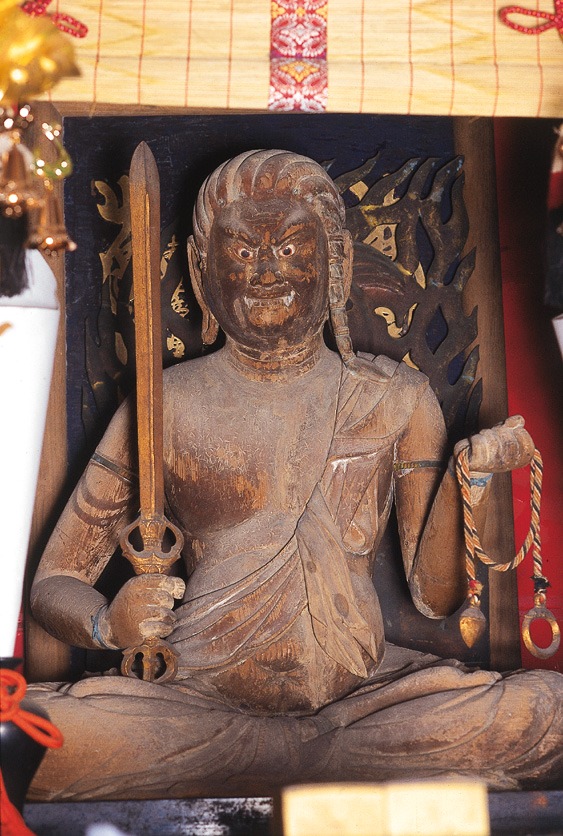
木造不動明王坐像
(もくぞうふどうみょうおうざぞう)
千葉県長生郡長柄町山根821(飯尾寺)
桧(ひのき)の寄木造り。膝張りが広く、体奥が深く安定感に富む造型である。製作は鎌倉末期。玉眼、弁髪(べんぱつ)の離れた部分及び条帛(じょうはく)の垂れ下がった部分は後世の補修である。また、昭和36年の修復の際に、胎内(たいない)より不動明王の種子(しゅじ)「カーン」を30,747字筆写した15mの巻子(かんす)が発見された。
参考:「改訂長柄町の文化財」(平成7年刊行)を見る This wooden statue of Fudoumyouou in a sitting position was made of hinoki (Japanese cypress) in parquetry. The physique is very stable with the knees spread wide and the body deep. It was made in the end of Kamakura era. The Gyokugan (crystal/glass eyes), the hanging section of Benpatsu (a long rope of hair), and the hanging section of Jouhaku were the repaired areas in the later periods. During the restoration work performed in the Showa period 36 (1961), a 15 m scroll on which 30,747 characters of Shuji (Sanskrit symbol) "kan" representing Fudoumyouou were transcribed was discovered inside the body.821 Yamane, Nagara-machi, Chousei-gun, Chiba-ken (Iio Temple)